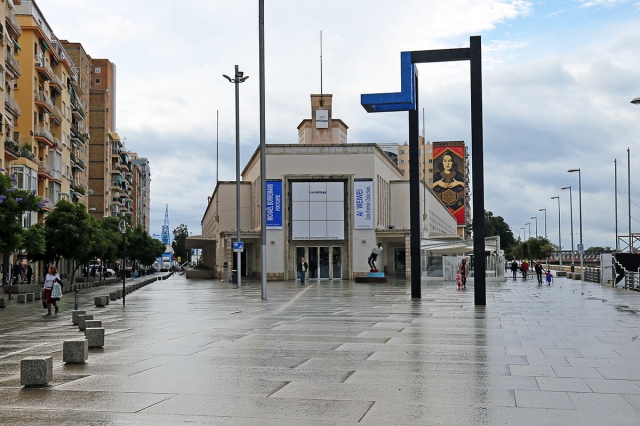sdfsdfs

In my studio, I consider myself a creative ringmaster whose role is to construct theatrical sets consisting of players and objects. I place these sets in dioramas in order to generate the air of strangeness found only in carnivals, sideshows, emporia of human oddity, and in the dark, unexplored corners of each human existence here on earth. I construct and arrange these sets, then photograph the results which end up as two-dimensional paintings.
My artistic intention is to place unrelated objects and players in mysterious settings and environments. Viewers will not normally find a reason for these objects being together, and so, initially bewildered, they are left to go through a period of intense rumination in order to arrive at a resolution to an otherwise perplexing situation. This is not to say that I don’t have detailed symbolic reasons for the interaction of these objects, players, and settings. But I invite all viewers to go through the process of discovery for themselves. After all, who knows what lurks within the spaces separating each and every being in this inner mysterium.
I have a certain method of working which first involves collecting many actors and objects of oddity for my theatrical compositions. Buildings, animals, deco furniture, barrels of debris, steampunk goggles, jointed dolls, rocking chairs, and rusted machinery all find their way into my inventory. I first locate these players in virtual stores, garages, warehouses, and general online collection centres. Many of them are purchased. Others are found free of charge. And then, many are also constructed in the far corners of my workshop, away from the eyes of curious onlookers.
Each and every player is selected or built for their potential in generating puzzlement, stepping on stage and delivering the precise moment of razor impact, a slicing of reality’s imposed bondage. I store all these objects in empty areas within my studio, where they patiently sit and wait for their moment on the stage of ontological mystery. There they will pose with majesty or shame and speak their lines with precision, method, and oratorical vision. All this is evangelically hosted on the dioramas pieced together in my crowded and busy studio.
When it comes time for another theatrical production, I roam through my studio emporium pulling out objects, facing off actors, prodding and pushing them, allowing them to try on ideas, fitting them with concepts, installing dialogue, prompting them to argue, changing clothing, filling one with dogma, another with sputter, always moving, measuring, recording shadows, length of fit, color of surface, and always, evaluating the potential to startle, awaken, confuse, and maybe, maybe even frighten.
I construct these dioramas every day. Like an alchemist seeking transformation, I measure out the compounds of my vision. So many times, the magic does not come. The sets are closed down and the curtains are closed. But then, sometimes, the right choices are made, the spontaneity of resolution is born, the visionary impact is ignited and at that moment, I move my camera into the set and collect the ideal photographs. These are then moved to another part of my studio, where they are processed and become the paintings which I exhibit in international venues.
This is my theatrical studio world. A world where objects are treated as symbolic messengers whose resilient oddity awaits viewers’ moments of awakening, understandings of the stage of existence, and the mental theatricality of life itself.
In the field of learning theory, Constructivism holds that learners construct mental models to understand the world around them. Constructionism accepts this, but further states that learning happens most effectively when individuals actually build their models using tangible objects.
Virtual Constructionism holds that production occurs most dynamically when artists construct image models in reality. It is a studio method of creating visual art products by virtually inhabiting the environment being created and actually working with the objects populating the image. In its most basic form (to construct static images), it involves two steps. Step one sees the artist enter a three-dimensional environment and build the first draft of the image using 3D objects, lights, compositional frames, and camera positions. The artist may build these objects from scratch, or may have an existing inventory collected for use. Camera shots of this environment (renders) are taken and collected. Step two sees these renders enter a series of virtual two-dimensional environments for enhanced work and modification. Step one usually employs standard 3D modeling software such as 3D Studio Max, Maya, or Poser. Step two uses graphics software such as Adobe Photoshop.